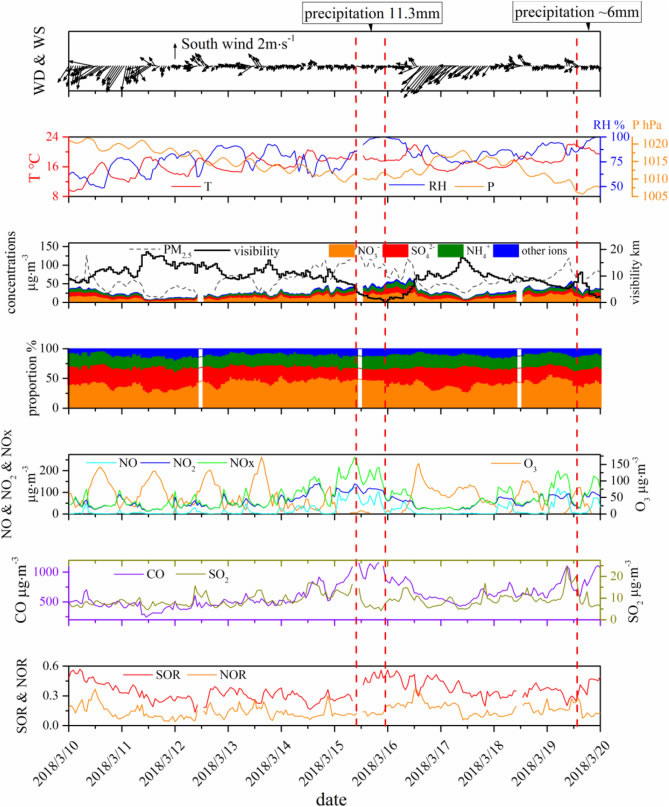A team led by Professor CHEN Jinsheng in the Institute of Urban Environment, Chinese Academy of Sciences (IUE-CAS), found that aerosol acidity played a key role in heterogeneous/aqueous reactions, which both occurred during an air pollution episode inducing by quasi-stationary front.
Climate in South China belongs to the monsoon of subtropical moist marine climate zone. In March and April, cold air from north and warm moist air from south are quite implicitly promising, resulting in quasi-stationary front that lies in South China. Gradients of air pressure were lesser and the circumstance was stable with low wind speed, which provided proper conditions for the air pollution episode formations probably. The phenomenon often occurred between 22 N–26°N. Previous studies focused on the weather caused by quasi-stationary front, especially for the precipitation.
The observation of air pollution episode was based on the equipment of air monitoring supersite locating in IUE-CAS. The meteorological parameters, concentrations of pollutants and chemical components were detected to investigate the influencing factors and formation mechanisms of the episode. The results showed that the episode in Xiamen was possibly driven by quasi-stationary front with high relative humidity. The precursor gas NOx participated in heterogeneous/aqueous reactions during the episode. Nitrate proportion of water-soluble inorganic ions was 42.2%. High concentrations of secondary inorganic aerosol ions and the high sulfur oxidation ratio (SOR) and nitrogen oxidation ratio (NOR) indicated the increasing conversions from SO2 and NOx to their corresponding particulate phases. The contributions of liquid water content (LWC) to the formations of HSO4- and H+in-situ at the higher RH levels were less than those at the lower RH levels. Although the concentrations of free H+ hydrolyzing from HSO4- and H+in-situ of particles enhanced with LWC, the hydrolysis rates and formation rates decreased. HSO4-/ H+in-situ decreased apparently with LWC thus the hydrolysis rate was slower than that of H+in-situ formations. The quasi-stationary fronts provided a moist environment with high LWC in particle surfaces, which possibly accelerated the formation of H+ by the two pathways. The negligible HSO4-/ H+in-situ indicated that almost all the in-situ acidity was neutralized, but there still existed some un-neutralized acids in total acids. The results of this study highlighted the signi-cance of LWC and chemical reactions associated with acidity during the speci-c synoptic situation in South China.
The results mentioned above have been published at Science of the Total Environment (2020, 707, 136194), and titled as ‘The characteristics of air pollution induced by the quasi-stationary front: Formation processes and in-uencing factors’. PhD student WU Xin is the first author, Professor CEHN Jinsheng is the corresponding author. This study was funded by the National Natural Science Foundation of China (41575146), the National Key Research and Development Program (2016YFC02005 & 2016YFE0112200), and the Chinese Academy of Sciences Interdisciplinary Innovation Team Project.

MODIS images of the banded cloud systems evolution during the episode. The red dot is the location of the observation site (a: 8:55, 10th Mar; b: 10:40, 12th Mar; c: 11:25, 13th Mar; d: 10:30, 14th Mar; e: 11:00, 17th Mar; f: 10:50, 19th Mar. The time was corresponding to local time.) (For interpretation of the references to color in this figure legend, the reader is referred to the web version of this article.)

Time series of surface meteorological parameters (WD, WS, T, RH and P), pollutant index (PM2.5, visibility, WSIIs and proportions, NO-NO2-NOx, O3, CO and SO2) and sulfur oxidation rate (SOR) and nitrogen oxidation rate (NOR).